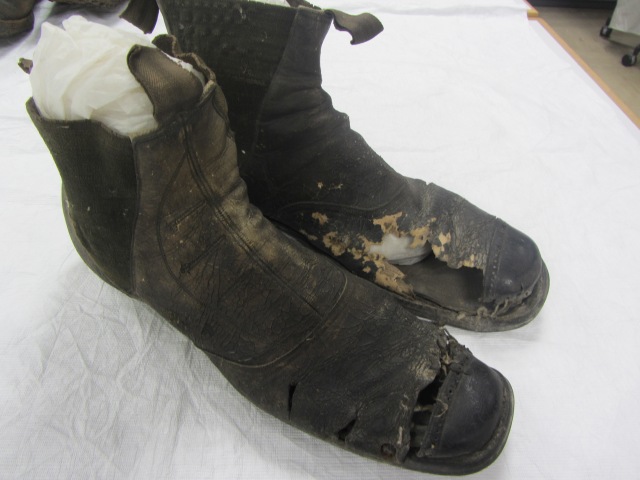Two weeks ago I had a phone conversation with a retired builder called George, who was telling me about the concealed deposits he’s come across over the years when renovating old houses. His finds have included coins placed on beams, a Christening spoon beneath the floorboards, a pair of shoes in the ceiling, and a shoe behind the fireplace (which is detailed here in a blog post by Malcolm Gaskill about the shoe and its owner, Laura). George surprised me by saying that most owners of these houses aren’t interested in the objects he finds, with the exception of Laura and her shoe; “Haven’t got a lot of soul, a lot of people,” he lamented.
As the Concealed Revealed Project is interested in looking at builders’ customs, I also asked George if he’d ever concealed anything himself in these houses, perhaps to commemorate the completion of a job. His answer intrigued me. Apparently he doesn’t see the point in concealing anything because, judging from past experience, the finders of such deposits are largely indifferent. He would only be motivated to conceal something if he could guarantee that a future finder would be interested in it, rather than simply throwing it away.
This comment got me thinking about concealment in a different light. Were some of these concealed deposits sequestered away with the intention that they would one day be recovered? Were the concealers hoping that their deposits would eventually communicate something about their lives to a future finder? Were they, in essence, a form of time capsule? (See here for a list of official time capsules)
This could certainly be the case with some concealed deposits. Take the Savoy Chapel shoes for example. These shoes, currently held at the Museum of London and detailed here, are a pair of man’s hobnailed boots found in the roof of the vestry of the Savoy Chapel, London. They originally had a scrap of wallpaper tucked inside bearing a pencil inscription, which read: ‘William Chapman/ B 3d July 1828/ this was don in 1876’. I suggested previously that perhaps the protective power of the shoe might be more potent with an explicit personal connection to its concealer. However, now I’m wondering if (over-interpretation being a common trap in the search for ritual), this pair of shoes and scrap of wallpaper were intended as a form of time capsule: as ‘time-travelling’ devices, to use Jarvis’ term (1992, ‘Modern Time Capsules’, Libraries & Culture 27: 3), in preserving information for the future.
 Photograph courtesy of the Museum of London
Photograph courtesy of the Museum of London
The same could be said of a concealed deposit found under a late 19th-century house in Christchurch, New Zealand: a green glass bottle containing a message on a scrap of rolled up paper.

 Photographs courtesy of Jessie Garland, Underground Overground Archaeology
Photographs courtesy of Jessie Garland, Underground Overground Archaeology
The writing is hard to make out but says something along the lines of: ‘This bottel [sic] was put here by the Hon ? on the 20 day of ? 1887 in the year of our Father and Saviour Jesus Christ, amen amen. Witness David Baxter(?)’ The finders, Underground Overground Archaeology (take a look at their blog here), think it may have been some form of 19th-century builders’ prank, possibly parodying the more formal time capsules of the time. But whether it was done in earnest or in jest, it certainly shows that not all concealed bottles are “witch-bottles” – a notion I’ve explored on the Inner Lives blog here.
Obviously time capsules differ from these kinds of concealed deposits because they usually have an officially assigned date for being unsealed, whereas the Savoy Chapel shoes and the Christchurch bottle were stumbled upon by chance. As far as we know their concealers, ‘William Chapman’ and ‘David Baxter’, had no specific date in mind for the finding of their deposits, but it still seems likely that their messages were intended to be read by future finders. So is eventual discovery actually the ultimate goal of concealment?
I certainly don’t think that this is the case with all concealed deposits; some appear to have been hidden away with irretrievability as the primary aim. But I do think that ‘time capsule mentality’ might account for some examples, and so we’ve added a ‘Time Capsules’ category on our Historypin collection of concealed deposits, hopefully to be populated soon.

The message reads – “This bottel [sic] was put here by the Hon J. Finn on the 20 day of Oct 1887 in the year of our Lord and Saviour Jesus Christ, amen amen. Witness David Baxter”
LikeLike
Thank you very much, I really appreciate your discerning eye!
LikeLike
Pingback: Concealing Coins – The Concealed Revealed